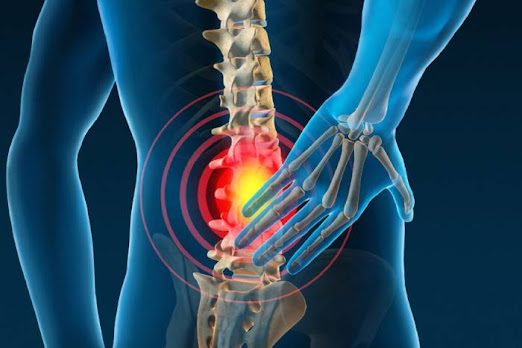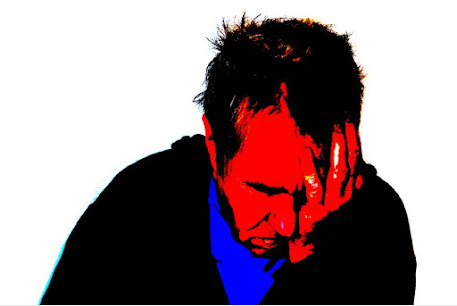what are the five most common causes of low back injury?
· Strains and sprains: These are the most common causes of low back pain. They occur when the muscles, tendons, or ligaments in the lower back are stretched or torn. This can happen due to sudden movements, lifting heavy objects improperly, or repetitive motions.
·
Traumatic injuries: These injuries can be caused
by falls, car accidents, sports injuries, or other accidents that involve a
sudden impact to the lower back.
·
Fractures: The frames in the spine can break due
to a fall, car accident, or other traumatic injury. This can cause severe pain
and disability.
·
Herniated discs: A herniated disc is a state in
which the soft, jelly-like center of a disc bulges out or ruptures through the
outer layer of the disc. This can put pressure on the nerves in the lower back,
causing pain, numbness, and tingling.
·
Sciatica: Sciatica is a state in which the
sciatic nerve, which runs since the lower back down the leg, is compressed or
irritated. This can cause pain, coldness, and tingling in the lower back,
buttocks, and leg.
Other causes of low back injury include:
·
Osteoarthritis: This is a type of arthritis that
causes the cartilage in the joints of the spine to break down. This can lead to
pain, stiffness, and redness in the lower back.
·
Scoliosis: This is a bend of the spine that can
put stress on the lower back.
·
Ankylosing spondylitis: This is an stirring
arthritis that can cause the bones in the back to fuse together. This can lead
to toughness and pain in the lower back.
·
Degenerative disc disease: This is a state in
which the discs in the spine start to break down over time. This can lead to
pain, stiffness, and redness in the lower back.
If you are experiencing low back pain, it is important to
see a doctor to get a diagnosis and treatment plan.
How do you treat a lower back injury?
Here are some home remedies that can help treat a lower
back injury:
Rest: The first step in treating a lower back injury is to
rest. This means ducking activities that put stress on your back, such as elating
heavy objects or bending over.
Ice: Applying ice to the artificial area can help reduce
pain and inflammation. You can use an rime pack or a bag of frozen peas covered
in a towel. Apply the ice for 20 minutes at a time, several times a day.
Compression: Compression can also help reduce bump. You can
use an mutable bandage or a compression sleeve to wrap the affected area.
Elevation: Elevating the precious area can help reduce
swelling and pain. You can lie down with your legs propped up on a pillow or a
stack of books.
Over-the-counter pain relievers: Over-the-counter pain
relievers, such as ibuprofen or acetaminophen, can help relieve pain and
inflammation.
Stretching: Once the pain has started to subside, you can
start stretching the muscles in your back. Gentle stretches can help improve
flexibility and range of motion.
Strength training: Once your back is feeling better, you can
start strength training exercises. These exercises can help brace the muscles
in your back and prevent future injuries.
If you are experiencing severe pain or other symptoms, such
as numbness or tingling, you should see a doctor. The doctor can spot the cause
of your back pain and recommend appropriate treatment.
Here are some additional tips for preventing lower back injuries:
·
Maintain a healthy heft. Excess weight lays
extra strain on your back.
·
Lift heavy objects properly. When you lift a
heavy object, bend your knees and keep your back straight.
·
Avoid sitting or vertical for long periods of
time. Get up and move around every 20-30 minutes.
·
Strengthen your core muscles. Strong core
muscles can help support your back and prevent injuries.
·
Stretch regularly. Stretching can help advance give
and range of motion in your back.
By following these tips, you can help cut your risk of lower
back injuries.
What position is best for back pain?
There are a few positions that can be helpful for relieving
back pain. Some of the most common include:
·
Sleeping on your back: This position can help to
keep your spine in a neutral position, which can reduce pain. To sleep on your
back, place a pillow under your knees to help to keep your back straight.
·
Sleeping on your side: This position can also be
helpful for relieving back pain. To sleep on your side, place a pillow between
your knees and another pillow under your head.
·
Sitting up straight: Sitting up straight can
help to keep your spine in a neutral position, which can reduce pain. To sit up
straight, keep your shoulders back and your head up.
·
Standing up straight: Standing up straight can
also help to keep your spine in a neutral position, which can reduce pain. To
stand up straight, keep your shoulders back and your head up.
It is important to find a position that is comfortable for
you and that helps to relieve your pain. You may need to experiment with
different positions to find the one that works best for you.
If you are experiencing back pain, it is important to see a
doctor to get a diagnosis and treatment plan. The doctor can help you determine
the cause of your back pain and recommend the best course of treatment.



